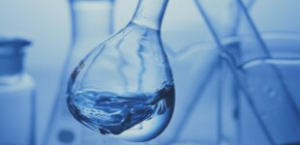Regardless of the scope of activity of chemical laboratories, practically each of them uses various chemical substances called chemical reagents. These include, among others, solvents and alcohols, standards, indicators, buffer solutions, acids, hydroxides or salts. The characteristics and the scale of research conducted in laboratories determine the types and quantities of chemical reagents used. They are used in various types of chemical analyses, research works, in preparation as well as in the production of other substances.

Characteristics of chemical reagents
Chemical reagents are chemical substances and their mixtures used in laboratories to perform syntheses, analyses, determinations of the content of various substances, distribution of sample constituents and carrying out broadly understood scientific and research work. Reagents are characterized by stable quality parameters (taking into account the level of impurities and the content of the main component), specific shelf time and an appropriate packaging guaranteeing the constancy of their composition. Chemical reagents are available on the market both in the form of solids (granules, powders, pastilles), as well as liquids – solutions with specific concentrations.
One of the most important parameters characterizing chemical reagents is their purity. It is the percentage by weight of the main substance, after deduction of impurities present in the reagent. Typically, the main substance is a single chemical compound, but it can also be a mixture of several substances. On the chemical market, reagents of varying quality and properties are available, depending on the intended use.
Classification of reagents
When choosing chemical reagents, it is worth considering the economic aspect, as not every analysis requires the use of the highest quality preparations, which cost the most. In some substances used for the determination of chemicals, even a high content of impurities does not affect the analysis to which the reagent is used. For this reason, among chemical reagents, there can be distinguished different purity grades, defining the content of main substances and acceptable levels of contaminants.
Taking into account the content of the main substance and impurities, the reagents are divided into:
- Technical grade – content of the main substance at 90-99%. They are usually industrial synthesis products.
- Purified grade – content of the main substance at 99-99.9%. They have uniform parameters. Reagent for general lab usage, usually for qualitative analysis. They can be used as substrates for syntheses and auxiliary substances.
- Laboratory grade – content of the main substance at 99.9-99.99%. They are used in laboratories to perform qualitative and quantitative analysis in accordance with the standards.
- Chemical purity grade – content of the main substance at 99.99-99.999%. It is the highest quality product that meets the requirements of specialized laboratory techniques. The amount of impurities is below the limit of detection of chemical methods.
- Spectrophotometric grade – content of the main substance at 99.999-99.9999%. They are used in spectral analysis, such as HPLC, GC.
Some chemical reagents are marked with the symbol FP. This means that this substance is characterized by particularly high purity, due to which it meets the pharmacopoeial requirements and can be used for pharmaceutical purposes. The same applies to substances designated with the PhEur symbol, which proves the compliance of the reagent with the requirements of the European Pharmacopoeia and the possibility of using it in the production of medicines in European countries.
Analytical reagents
The group of chemical reagents dedicated to analytical methods is called analytical reagents. They are chemical compounds of defined purity, reacting under specific conditions. They are divided into several groups:
- group reagents – these are substances can simultaneously separate many ionic agents. Typically used in qualitative analysis. Thanks to them, it is possible to separate a mixture of cations or anions.
- selective reagents – substances that react with a limited number of ions from a given study group. They are used to determine ions in qualitative analysis.
- specific reagents -designed to detect specific ions with which they react in a characteristic manner under precisely defined conditions.
- masking reagents – these are substances that react with the components of the solution that interfere with the determination of ions subjected to qualitative analysis.
Offer of PCC Group chemical reagents
The PCC Group’s portfolio includes high-quality chemicals used as chemical reagents. All products are manufactured using the Integrated Quality Management System according to ISO 9001, ISO 14001, ISO 50001 and BS OHSAS 18001 standards.
Among the chemical reagents in the PCC Group offer you can find chlorobenzene pure for analysis used as a solvent in laboratory applications and in the production of pharmaceutically active ingredients (API). The purity of chlorobenzene allows the use of this substance in quantitative research and qualitative analysis. Another chemical reagent with purity for analysis is caustic soda flakes a.p. used in classical qualitative and instrumental analysis. Excellent product parameters such as low iron content (below 15 ppm) and chlorine (below 200 ppm) testify to the high-quality caustic soda, which can be used by specialists in the most demanding laboratories. The portfolio of the PCC Group also includes hydrochloric acid min.37% – pure for analysis used in laboratories to perform quantitative analyzes or to detect cations. The offered products have ADR and UltraPure markings, guaranteeing safe transport and purity of chemical reagents.